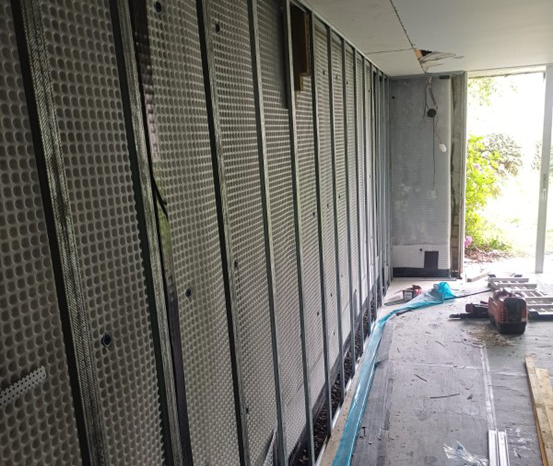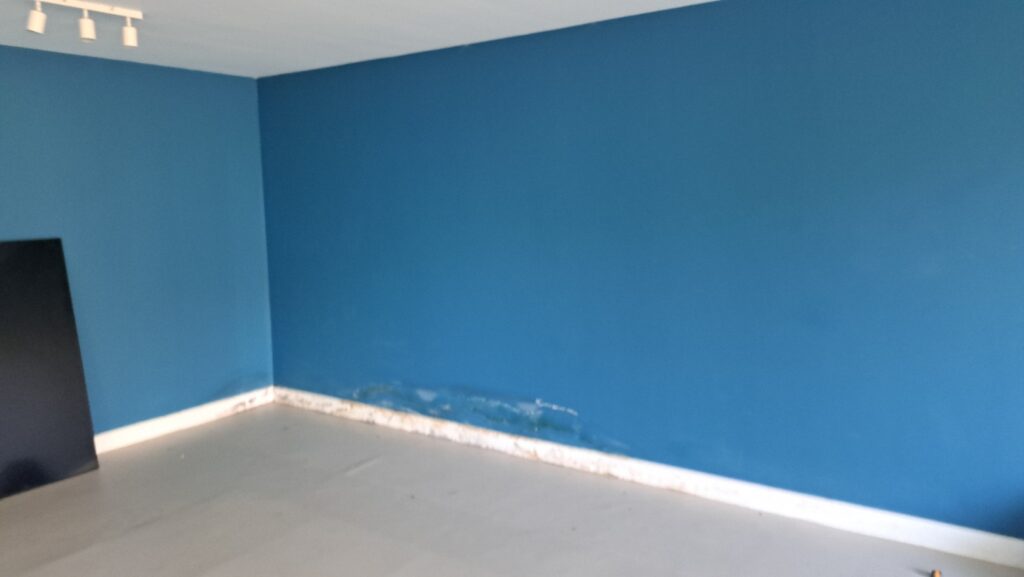Structural Waterproofing and Damp Remediation in Lenzie

Project Background
A domestic client in Lenzie contacted us to investigate dampness affecting a soil-retaining wall, along with condensation mould throughout a former swimming pool area. The pool had been infilled and converted with a suspended timber floor, but the space was suffering from ongoing moisture issues that were impacting the condition and usability of the area.
Identifying the Problem
Our survey highlighted major deficiencies in the existing waterproofing system. The retaining walls had been lined with EPS insulation boards bonded using a bituminous coating, then covered with plywood, a loose-laid damp-proof membrane, and dry lining. Once finishes were removed, we uncovered wet rot within the timber structure.
The internal environment also showed very high humidity levels (90% RH at 16°C), with visible condensation mould. A lack of heating and ventilation was worsening the problem, putting both the structure and the living environment at risk.
The Solution
To resolve the issue, we installed a Newton Type C waterproofing system to the affected areas, supported by remedial repairs to accessible sections of the external waterproofing.
To control humidity and prevent future condensation problems, we also fitted a Positive Input Ventilation (PIV) unit alongside a high-performance extract fan. This combination provided a robust, long-term solution to protect both the property and its occupants.
Method of Repair
The defective wall build-up was fully removed and replaced with the Newton system, providing reliable protection against dampness and water ingress.
Mechanical ventilation was introduced through the PIV and extract fan, ensuring consistent air circulation, controlled moisture levels, and improved indoor air quality.
Internal finishes were reinstated using Gypframe and Gypsum Thermaline insulated boards, which not only improved the thermal efficiency of the space but also enhanced overall comfort.
Challenges Faced
At the outset, the client was reluctant to commit to a full Type C system, as dampness appeared to be concentrated on one side of the room. We therefore designed the system to protect the most affected areas immediately, with the flexibility to extend coverage in the future. This ensured effective protection without unnecessary disruption or cost.
Benefits to the Client
The completed works transformed the area into a dry, insulated, and comfortable living space. The Newton Grade 3 system, paired with improved finishes and mechanical ventilation, eliminated the risk of damp, mould, and timber decay.
The new ventilation system also improved indoor air quality, reducing condensation and creating a healthier environment for the client. Importantly, the works were delivered on time and within budget, providing lasting reassurance in the durability and value of the solution.









